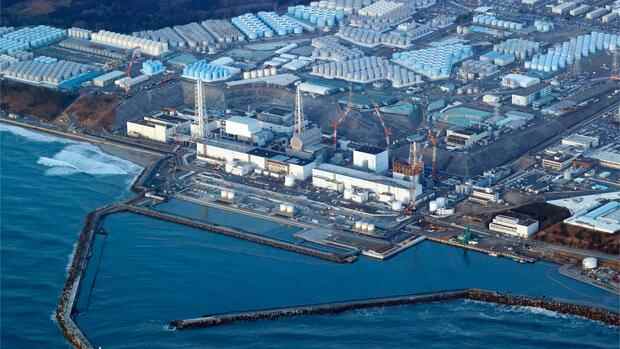The consequences of the nuclear catastrophe lead to a billion dollar compensation payment for former Tepco managers.
(Photo: AP)
Tokyo There has never been a payment of damages of this magnitude in Japan. The Tokyo district court on Wednesday ordered four former executives of the electric utility Tepco to pay their former employers 13 trillion yen (95 billion euros).
It is the first time in the Fukushima nuclear accident court cases that directors have been held personally liable for the incident. The sum serves as compensation for the damage caused by the disaster at the Fukushima 1 nuclear power plant in 2011. Japan’s largest regional electricity supplier Tepco is the operator of the power plant.
The court only partially accommodated the 48 shareholders who filed the lawsuit in 2012. The shareholders had demanded a total of 22 trillion yen (about 160 billion euros). According to previous estimates, this roughly corresponds to the costs that the company has incurred and will incur as a result of crisis management and the long-term rehabilitation of the four destroyed nuclear reactors. Tepco denies the amount of damage.
The four people convicted are former CEO Tsunehisa Katsumata (82), former President Masataka Shimizu (78), and former Vice Presidents Ichiro Takekuro (76) and Sakae Mutoh (72). For the former managing director Akio Komori (69), the court rejected a liability for damages. How the managers should raise the sum is completely unclear.
Top jobs of the day
Find the best jobs now and
be notified by email.
The proceedings dealt with the question of whether the convicts could have prevented the accident of March 11, 2011. Back then, an earthquake measuring 9 on the Richter scale off the northeastern coast of Japan triggered a tsunami that devastated more than 300 kilometers of shorelines and cities. Around 16,000 people died when the water masses died.
Have the board members done everything possible?
The four reactors of the Fukushima 1 nuclear power plant were hit and devastated by a 15 meter high wall of water. Shortly thereafter, core meltdowns and hydrogen explosions occurred in three reactors, emitting large radioactive clouds. 160,000 people were evacuated within a radius of 40 kilometers.
Other courts have so far refused to prosecute the Tepco board members personally. The Supreme Court even struck down a criminal lawsuit in 2019, which is now being appealed. In the civil lawsuit that has now been decided, the presiding judge, Yoshihide Asakura, ruled that the four convicts failed to fulfill their duty as Tepco directors to immediately order minimal tsunami countermeasures at Plant No. 1 in Fukushima.
He said the possibility of a serious accident related to the tsunami could have been avoided if the power plant operator had taken anti-flooding measures in the main buildings and critical facilities.
At the heart of the dispute is the question of whether an official long-term assessment published in 2002 credibly pointed to the risk of earthquakes. After that, the nuclear power plant was threatened by a tsunami of up to 15.7 meters in height.
The plaintiffs consider the study reliable, the defense unreliable. In the eyes of the board of directors, the measures implemented at that time were at a safe level from the point of view accepted at the time. It is still unclear how the convicts want to react to the lawsuit. A revision, for example, could delay the immense payment obligation by at least years simply because of the procedures involved.
More: Eleven years after Fukushima – Japan wants to revive nuclear power

